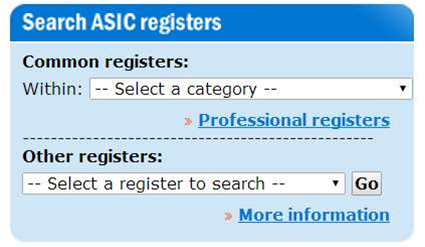ASIC has migrated two of its corporate registers off an IBM mainframe and onto a platform running Oracle's database and middleware, and is now focusing its attention on similarly transforming the remaining 20-odd registers it maintains.

Over the last two years, the corporate regulator has transferred registers for business names and self-managed super funds off its ‘Ascot’ IBM mainframe and Adabas Natural database platform.
The move away from the IBM mainframe was focused on mitigating risk in a database platform that had been in use for over 20 years, and which had a “diminishing resource pool” in the local IT market, a spokesperson said.
Both migrations were funded out of government reforms - the SMSF migration came as a result of the former Labor Government’s Stronger Super reforms, while the business names register was a COAG (Council of Australian Governments) initiative.
The regulator is now keen to shift the remaining 20-odd registers off Ascot and onto the Oracle stack. It has submitted a business case for funding, which is currently under consideration.
The Ascot system is ASIC’s repository for all register data.
The largest register within Ascot is the company register, which currently contains about two million live records on companies and about 8.5 million records on persons associated with registered companies.
At the smaller end of town is the liquidators register, which currently holds information on around 650 live liquidators.
All registers will be in scope to move across to Oracle should the business case be approved, an ASIC spokesperson said, in what the regulator’s 175-strong IT team expects would be a multi-year project.
Oracle as the new platform “made sense” due to existing Java development skills and technology within the organisation, the spokesperson said, along with the company’s “viability and presence” in Australia.
The technology ASIC has implemented for the first two registers includes Oracle’s service-oriented architecture stack as its core integration service, the Oracle Database, Siebel CRM, and a number of periphery products including Oracle’s data quality name recognition technology. It is mostly running Oracle middleware in a virtualised environment on commodity hardware.
Once ASIC receives corporate approval for the project, it expects to utilise more in-house expertise than it did with the first migrations.
ASIC partnered with Accenture as a system integrator to get the business names and SMSF registers onto Oracle, but the next time around it would prefer to complete the project internally as much as possible, with a partner engaged to handle any peaks.
Such an approach would mean ASIC retains any skills and knowledge gained during the process, rather than watching them leave the organisation when the project ends and the systems integrator departs.
“Since the initial deployment of the Oracle platform, ASIC has developed in-house expertise in the Oracle technology stack and now maintains the platform without the need for external integrator resources,” the spokesperson said.
“Any future program of work will utilise ASIC's internal resources and expertise, and be supplemented by external integration resources where necessary, to manage the peaks in resourcing needs.”



_(20).jpg&h=140&w=231&c=1&s=0)

.png&h=140&w=231&c=1&s=0)



_(26).jpg&w=100&c=1&s=0)

 iTnews Executive Retreat - Security Leaders Edition
iTnews Executive Retreat - Security Leaders Edition












_(1).jpg&h=140&w=231&c=1&s=0)



